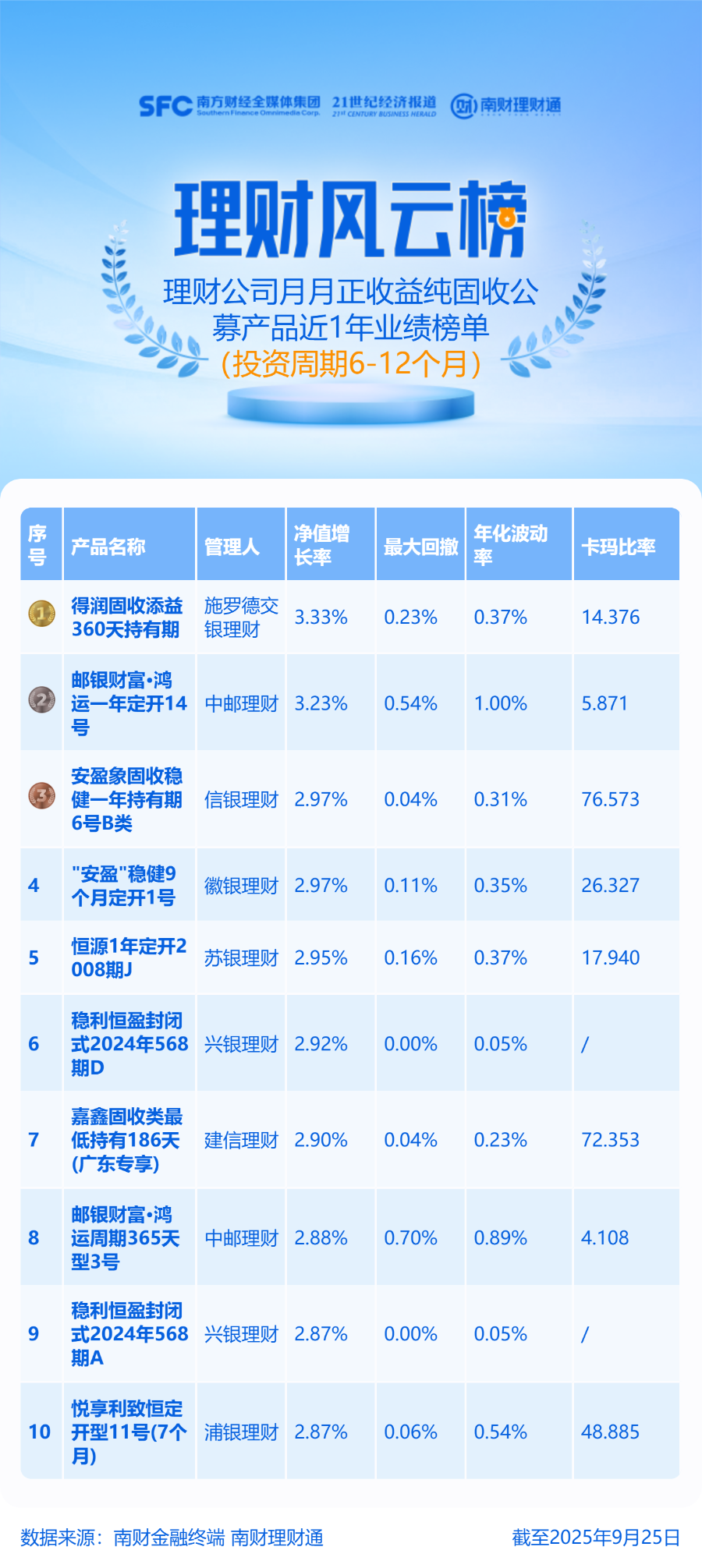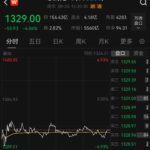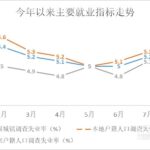Data Description:
The product statistics cover publicly offered pure fixed-income products with investment periods of 6-12 months (inclusive) issued by wealth management companies, which have maintained positive returns at the end of each complete calendar month over the past year. The statistical cutoff date is September 25, 2025, with the statistical period being the past year.
Rankings are generated through fully automated real-time AI ranking systems. If you have questions about the data, please contact support for further verification.
I. Overall Performance
Data shows that as of September 25, 2025, wealth management companies collectively have 946 outstanding publicly offered pure fixed-income products with terms of 6-12 months (inclusive), including 71 USD products, 1 EUR product, and 874 RMB products.
The average net value growth rate for RMB products over the past year was 2.12%, with an average maximum drawdown of 0.31%. Among these, only 186 products achieved positive returns every month over the past year, accounting for 21.28% of the total. Additionally, 14 products reported negative returns over the past six months.
II. Featured Product Analysis
In the current rankings, “Derun Fixed Income Enhancement 360-Day Holding Period” issued by a joint venture wealth management company achieved a net value growth rate of 3.33% over the past year, ranking first. Another product also exceeded 3% with a net value growth rate of 3.23% over the past year.
The Derun Fixed Income Enhancement Holding Period series primarily invests in stable, low-volatility assets and high-quality, high-grade bonds, flexibly utilizing credit, duration, and leverage trading strategies to enhance returns. The series covers various holding periods including 30-day, 60-day, 90-day, 120-day, 180-day, and 360-day options.
As of the end of the first half of 2025, the “Derun Fixed Income Enhancement 360-Day Holding Period A” had total shares of 10,954,500, with a net value growth rate of 6.21% since its establishment. In the second quarter, the product mainly invested in medium-to-high grade credit bonds, while also flexibly allocating to secondary bond funds and moderately utilizing leverage arbitrage opportunities.
Regarding investment strategy, the third quarter will utilize risk management tools to control net value fluctuations to some extent, focusing on portfolio liquidity management for open-ended products. The strategy will primarily involve high-grade bond allocations while increasing portfolio diversification and avoiding credit downgrades to enhance portfolio stability.






